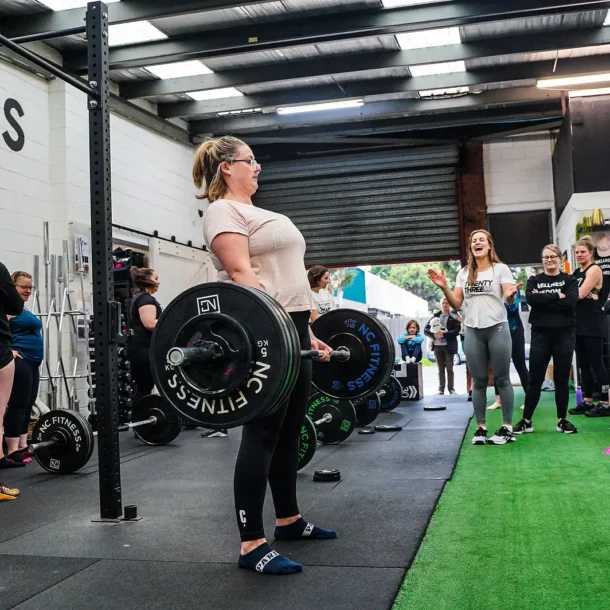

It is true when they say the second pregnancy goes quicker than the first. I can not believe I am already hitting 22+ weeks and well into my second trimester.
In this post I want to discuss some important exercise considerations that I am mindful of as a coach (and an active pregnant lady).
It is important to note that you can do everything right and still have things go wrong or have a difficult recovery. Prolapse, diastasis recti and hernias are unfortunately common experiences during pregnancy or postpartum. I hope this article gives some food for thought around how to monitor and manage increased intra-abdominal pressure down on pelvic floor and out on the abdomen.
With my first pregnancy I made the most significant loading modifications to my lifts towards the end of my second trimester. Second time around, I have needed to drop more weight off the bar from around 4 months.
The need to drop weight is less to do with the strength of my muscles and everything to do with my ability to manage intra-abdominal pressure. As your pregnancy progresses, you need to become increasingly mindful of not ‘bearing down’ and placing an excessive amount of force through the pelvic floor.
When we lift, we use our breath to help hold tension in our core (both through the front abdominals and back). When pregnant you need to be more mindful of how you use your breath to control pressure rather than direct it downwards.
The lower abs are a window to the force being applied to the pelvic floor. The belly throughout the lift should get smaller and lift slightly when gathered in correctly.
This unnecessary straining and bearing down is easily rectified by decreasing the load lifted. Put simply opt to lift less weight for more reps to still get a great workout. Also pay close attention to your breath and where you are directing pressure. Think about snapping the belly back, rather than downward.

This is another significant area of difference between my first and second pregnancy. Despite a comprehensive postpartum core rehabilitation program, there is no doubt that my core muscles have stretched and relaxed faster this time around.
As a result I am more conscious of needing to modify and be mindful of exercises that cause bulging through my midline and lead to diastasis recti (separation of the linea alba, the connecting tissue of your ‘6 pack’ abdominal muscles ).
This is an easy one to assess visually. As a coach I am looking for how the midline looks when my pregnant client moves into different positions. Instead of seeing the belly lift and pull in, we see a small doming or bulging shape. This is one reason I like to train in my crop top while pregnant as it is also something I can readily see on myself.
Recognize the exercises that cause the doming and modify. Unfortunately for me this means push ups on my toes and any front bearing positions, like planks or renegade rows. I can avoid this excessive loading through my core by regressing these exercises to my knees or to a four point position. With some other exercises (like tricep rope pull downs), the pooching of the belly is being caused from trying to lift too much weight for what my core can control. So again, I opt to move less weight and do more reps.

Some time in the second trimester, it is also recommended to move away from some exercises that are performed while laying flat on your back. This is due to the baby compressing the inferior vena cava and this leads to a decrease in foetal blood supply. Recent studies now suggest that it is typically fine for an expecting mother to perform exercises flat on her back for a short period of time, especially when there is movement in the torso or legs. However caution should still be taken!
If the inferior vena cava is sufficiently compressed, you may experience nausea, dizziness or breathing issues when laying flat on your back.
This is easily worked around by using an incline bench or elevating the torso or feet in typically flat-laying exercises (like bridges or scull crushers).
There is also no denying that getting down and up after laying flat on your back when pregnant is a challenge in itself, so making modifications to avoid this is always appreciated (especially in later stages of the pregnancy). The key here is smart programming.
If you are pregnant or interested in more information in this prenatal space, be sure to subscribe to our Youtube channel or sign up to our fortnightly ‘The Growing Bump’ newsletter for more great content.

Ange Drake is an personal trainer, women’s empowerment coach and fitness blogger in the northern suburbs of Melbourne. She is the director of one of the few womens’ only strength training gyms in Melbourne, 23W. Ange helps women to learn how to use strength based training, nutritional strategies and a positive mindset to transform their bodies, relationship with food and mind.
Can’t decide which of our packages is best suited for you? Take our questionnaire to help you decide!





